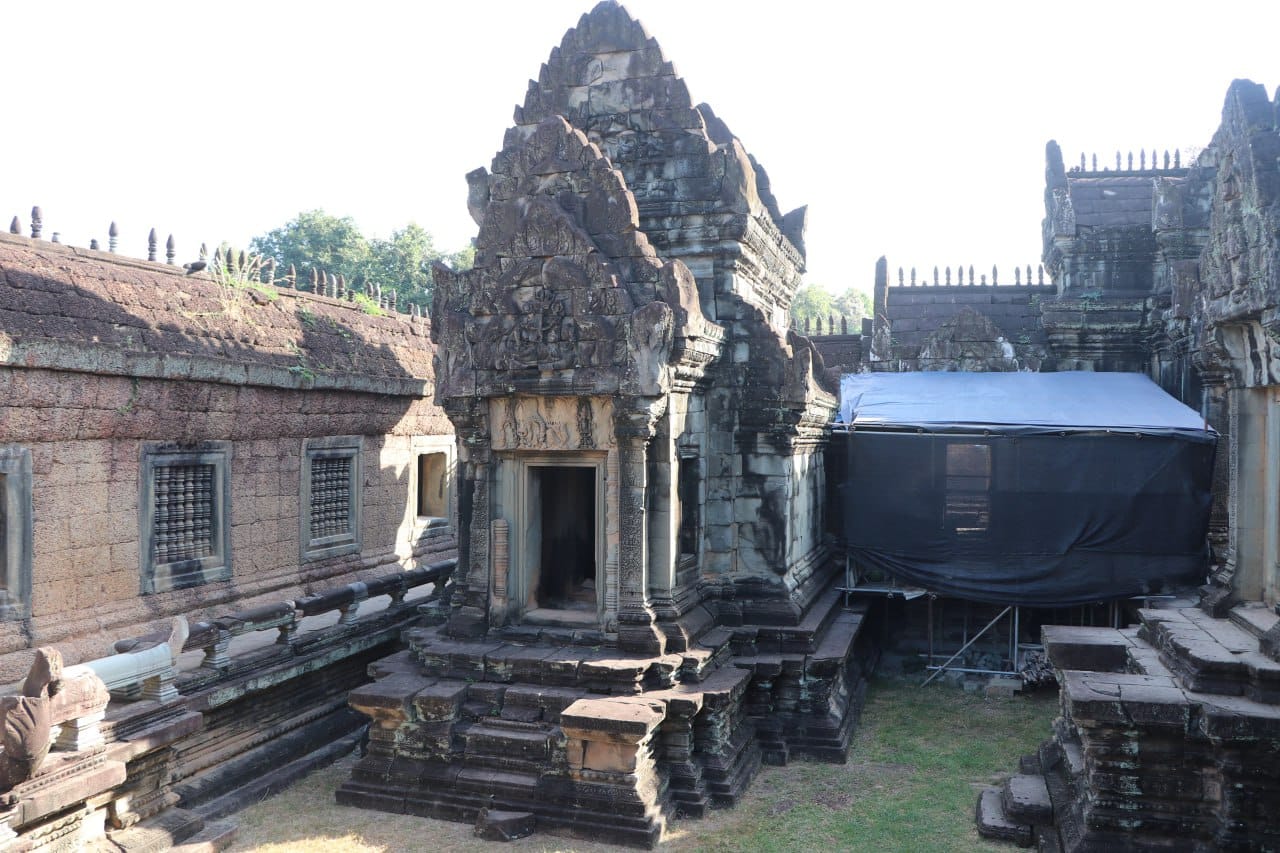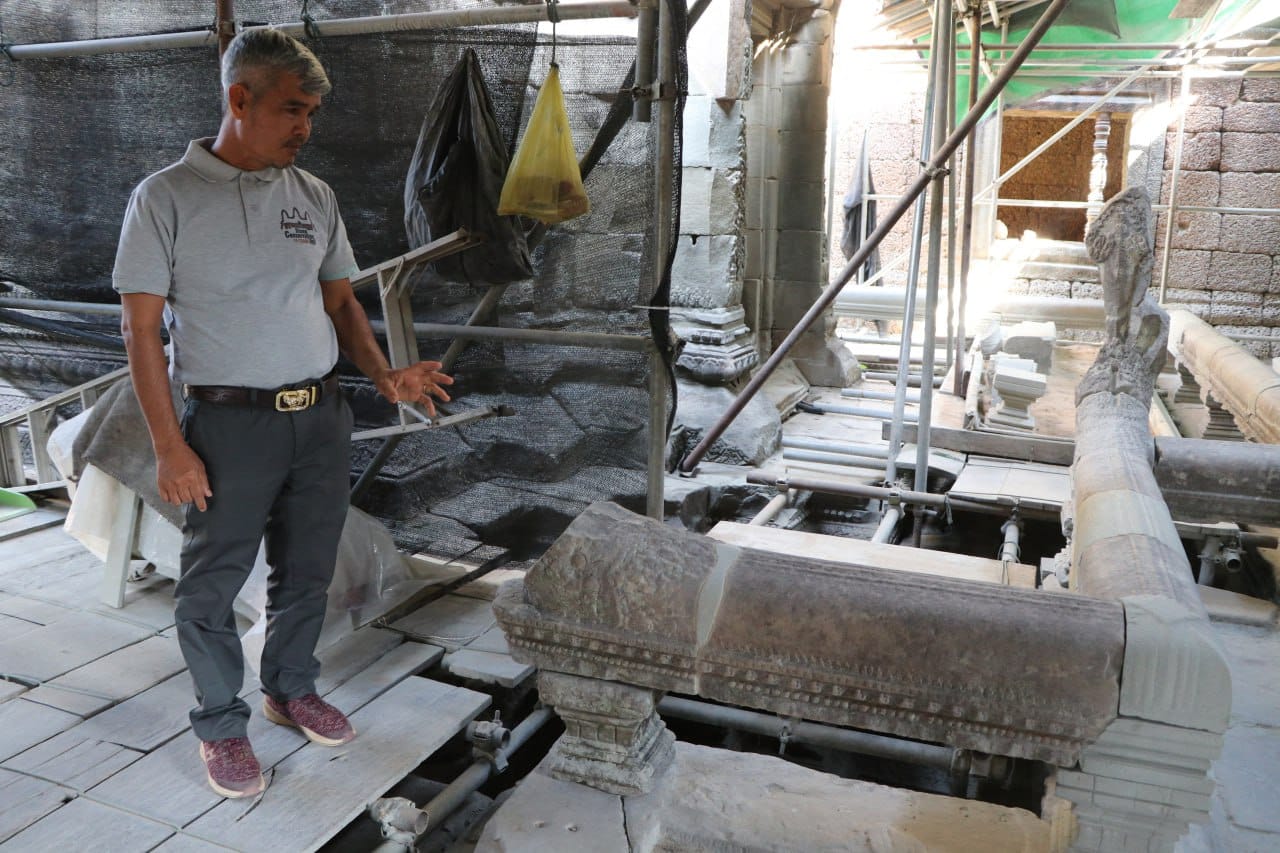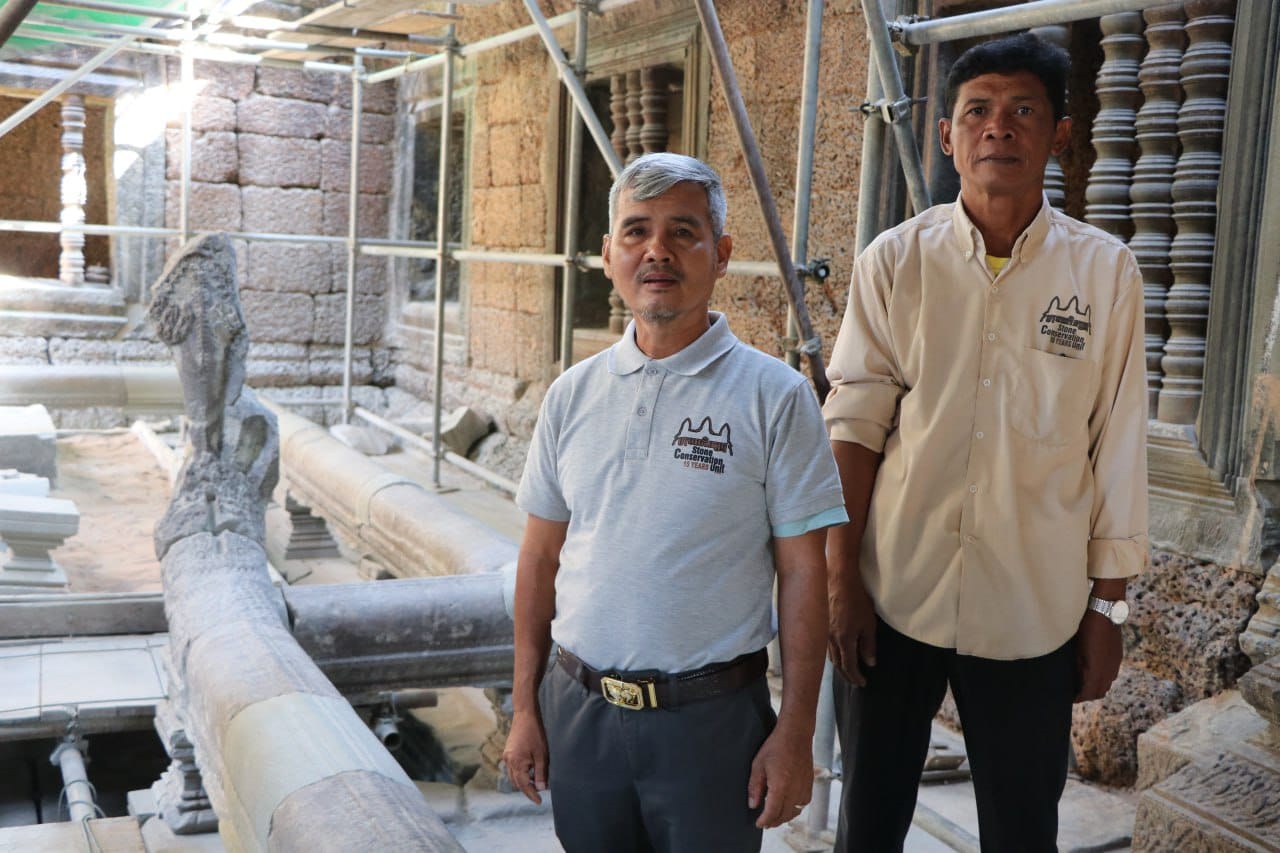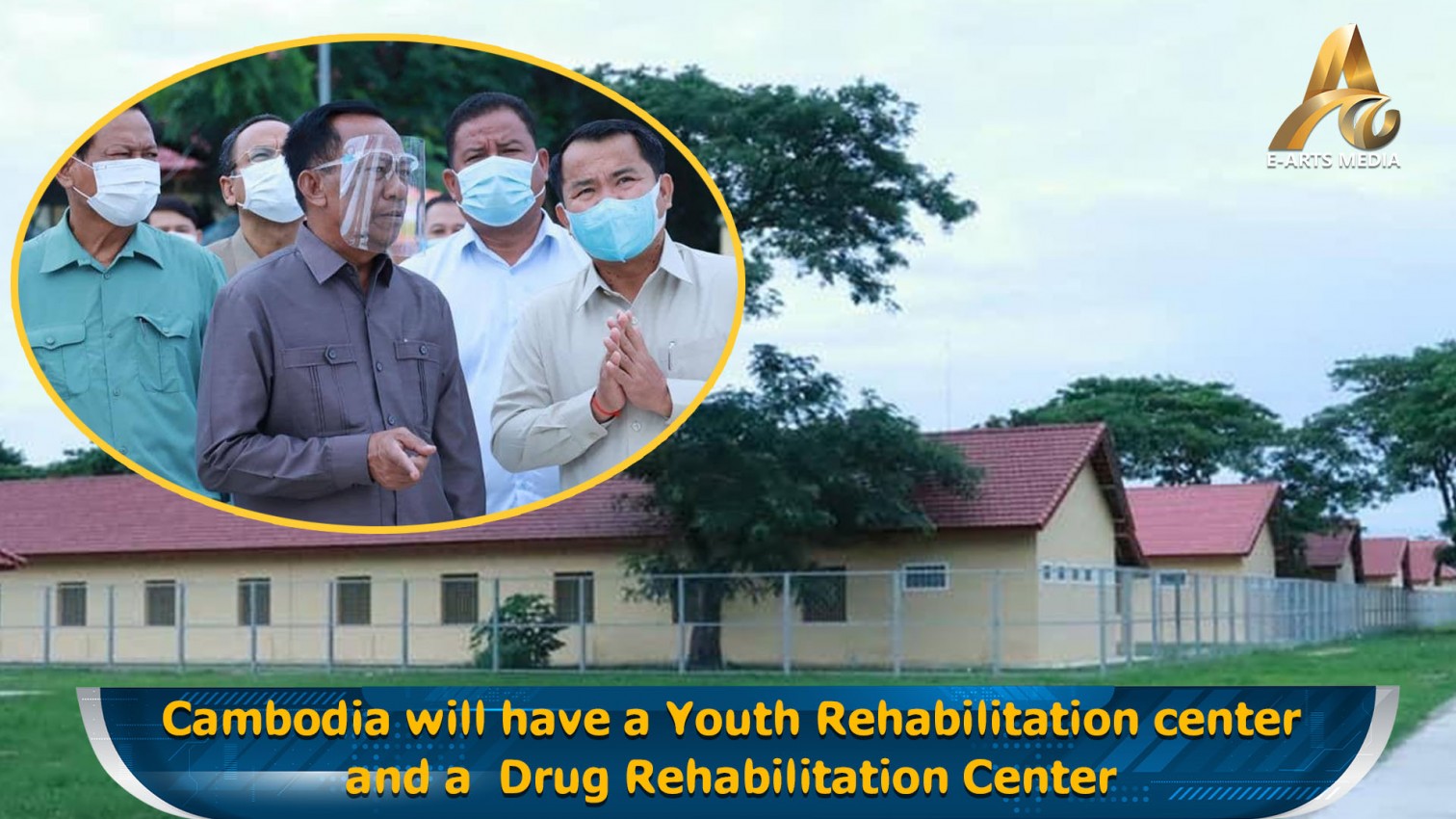ANGKOR: Ten kilometers northeast of Angkor Wat lies the stunning but often overlooked Banteay Samre Temple. Assumed to have been started and completed under two different kings, the site features decorative adornments that date to both the 11th and 12th centuries. This week, The Stone Conservation Unit (SCU) of the APSARA National Authority announced that visitors will now be able to see the completed 24-meter section of the Naga balustrade that runs along the site’s northeast corner.
According to SCU head Long Nary, the restoration project took six months to complete, starting in mid-June 2023and finishing up in December. He added that the structure of the Naga balustrade had collapsed, with some of the massive stone pieces on the ground, and others tilting unsteadily. He said that the restoration team worked hard to collect stone fragments of the original balustrade as much as possible, with some stones lying where they had fallen, and others found in new locations. The team replaced missing stones with new ones where needed to preserve the structural integrity of the balustrade.
With the balustrade complete, Banteay Samre’s original beauty has been restored even further, in addition to creating a safer environment for tourists. As in all ancient Khmer temples, tourists are asked not to sit or lean on the restored structures so that they can be seen for generations to come.


























